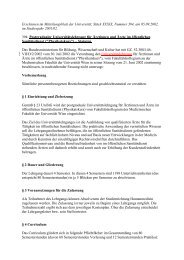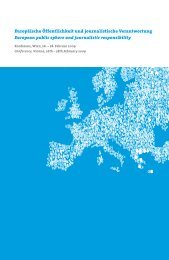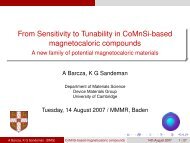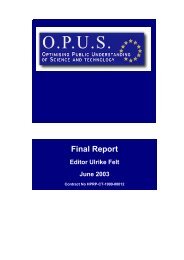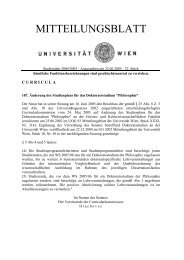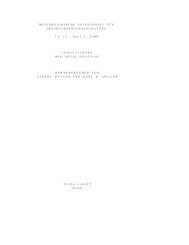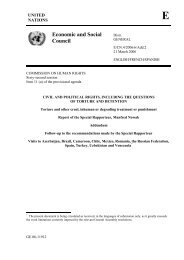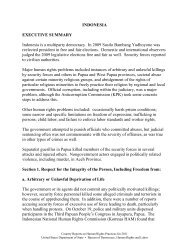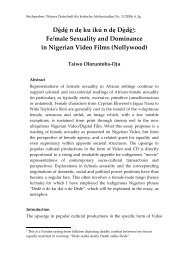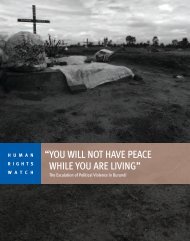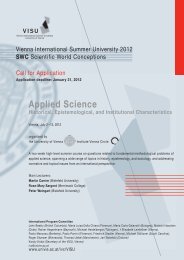(Stand: 25. Juli 2007) ANDERSON, Michael Alan ... - Universität Wien
(Stand: 25. Juli 2007) ANDERSON, Michael Alan ... - Universität Wien
(Stand: 25. Juli 2007) ANDERSON, Michael Alan ... - Universität Wien
You also want an ePaper? Increase the reach of your titles
YUMPU automatically turns print PDFs into web optimized ePapers that Google loves.
MEDIEVAL & RENAISSANCE MUSIC CONFERENCE <strong>2007</strong> – WIEN, 7.-11. AUGUST ABSTRACTS<br />
� �<br />
VAN DER BERG, Alma (<strong>Universität</strong> Amsterdam)<br />
The weeping of knights and princesses. Text, metrics and music in Italian madrigals<br />
on texts by Ariosto and Tasso<br />
Freitag/Friday, 10.8., 15.30 Uhr, KuGe, SR 1<br />
In this paper the text-music relationship in the madrigal will be examined from a literary<br />
as well as from a musicological point of view with a primary focus on the musical influence<br />
of the formal aspects of the text. Compared to semantic aspects of the text like word<br />
painting, the musical influence of formal textual aspects in the madrigal has still received<br />
little attention in analysis.<br />
All madrigals studied here are settings of laments from Ariosto’s Orlando furioso and<br />
Tasso’s Gerusalemme liberata. Written in the metrical form of the ottava, these laments<br />
share common literary characteristics, often inspired by laments in Antiquity. This intense<br />
expression of grief, inherent to the theme of arms and love in the epic poem, and<br />
uttered in direct speech by different knights and princesses, causes irregularities in the<br />
metrical form. Short emotional phrases and clashing accents that imitate natural speech<br />
push the poetic form to its limits.<br />
Such laments were very popular among madrigal composers because of their emotional<br />
content. A selection of these works, including works by Ruffo, Gabrieli, De Wert<br />
and Monteverdi, will be analysed with attention to the metrical characteristics typical for<br />
the text of the lamento as well as to the general characteristics of the ottava like accents,<br />
verslines and syntax. Particularly interesting is the musical interaction between different<br />
elements of the text.<br />
VESELOVSKÁ, Eva (SAW, Bratislava)<br />
� �<br />
Notationssysteme der neuentdeckten mittelalterlichen liturgischen Musikquellen<br />
aus Bratislavaer Archivbeständen – Einflüsse und Eigenschaften<br />
Donnerstag/Thursday, 9.8., 18.30 Uhr, KuGe, SR 3<br />
In den letzten Jahren (2004–2006) begann man im Rahmen einer systematischen Erforschung<br />
der mittelalterlichen notierten Quellen vom Gebiet der Slowakei im Institut für<br />
Musikwissenschaft der Slowakischen Akademie der Wissenschaften eine zentrale Datenbank<br />
der mittelalterlichen notierten Materialien vom Gebiet der Slowakei aufzubauen.<br />
Aufgrund der festgelegten Aufgaben für die Gestaltung dieser Datenbank, die an ältere<br />
Forschungen anknüpft (Rybarič, Szendrei, Czagány, Veselovská), wurde eine wissenschaftliche<br />
Revision der bekannten Handschriften und gleichzeitig eine Quellenforschung<br />
in einigen Archiv- und Bibliotheksinstitutionen Bratislavas durchgeführt (Slowakische<br />
Pädagogische Bibliothek – Studierraum Historische Drucke, Musikmuseum des Slowakischen<br />
Nationalmuseums, Staatsarchiv Bratislava, <strong>Universität</strong>sbibliothek – Kabinett<br />
Handschriften, alte und wertvolle Drucke, Zentralbibliothek der Slowakischen Akademie<br />
- 76 -




